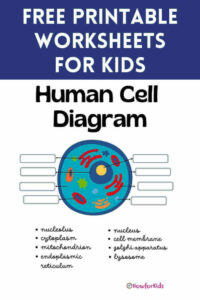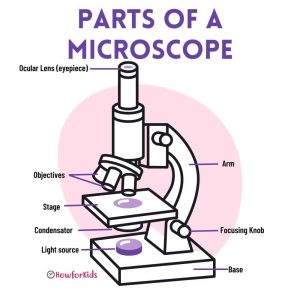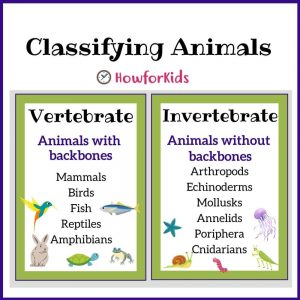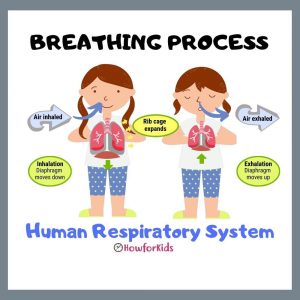Cells Structure and Function
Table of Contents
All living organisms on Earth are divided into cells. Scientists have long asked questions:
- Will all plants be made up of cells?
- And will animals have cells too?
- Will there be animals made up of a single cell?
- What is a cell?
They could only answer what they observed with the naked eye.
PDF: The Human Cell for kids
The cell is the smallest element that can be considered alive. The cells are so small that they cannot be seen with our eyes. You need a microscope to view them. The microscope is an instrument that magnifies images many times that only with your eyes it is not possible to see.
Who named the cell?

Thanks to the invention of the microscope, scientists discovered the existence of cells. The microscope is an invention that has benefited humanity. The first microscopes were very rudimentary and with very little capacity to magnify the images.
History of the Cell by Robert Hooke
In 1665, Robert Hooke, a scientist living in England, gave the cells their names. With a microscope (a tube with two lenses that magnified 150 times the size of what he was looking at) looking at a piece of cork, he discovered that it had small “cell” shaped structures. Those little shapes reminded him of little rooms, which is why he called them cells.
Cell is the term we use today to describe the basic units of all living things. It is a word that comes from the Latin that means “cell”.
Also read: History of the Microscope: Parts & Functions
The Discovery of Microorganisms
In 1674 Antoine Van Leeuwenhoek was a Dutch cloth merchant, he also built his own microscopes. So far only magnifying glasses were used. Observing the “scraping” of his teeth and a few drops of rainwater, he discovered tiny beings that moved. Although these beings did not have a mouth or a head, this man could see that they “swam”. He gave them the name “animalcules”. This is how microorganisms were discovered. They were free cells that had a certain degree of “organization.”
Who Developed the Cell Theory?
Centuries later, two German scientists Matthias Schleiden and Theodor Schwann made their own discoveries about cells that added to our understanding of cell theory.
How organisms have been classified on the basis of number of cells?
All living organisms are composed of cells. On the basis of the number of cells, organisms are classified as: Unicellular organisms and Multi-cellular organisms.
Difference between Unicellular and Multicellular Organisms
• Unicellular organisms
They are those living beings that are made up of a single cell. For example, in microorganisms, the paramecium or the amoeba, which are living beings that are made up of a single cell that performs all the functions to live. Sometimes single-celled organisms do not live-in isolation. They are grouped into “colonies” where each cell continues to perform all the functions of a living being and maintains the ability to live independently. This is the case of bacteria, yeasts, amoebas, paramecia, among others.
• Multi-cellular organisms
They are those living beings that are made up of millions of cells and cannot live in isolation. Each cell in this case performs a specific task and they all work together to ensure that the organism survives. It is the example of human beings, plants and animals.

Read also: Vertebrates and Invertebrates
What’s found inside a cell? Parts of the Cell and Functions
Right now your body is doing a million things at once. Cell is the basic unit of life. Although there are different types of cells, of different sizes, with different functions, we know that they all have components in common.
• Cell Membrane: It is an external envelope that protects and limits all cells. This membrane’s function is to control the substances that enter (nutrients) and those that leave (waste) of each cell. It is permeable. This permeability characteristic is said to be selective because it selects which substances are allowed to enter and which are allowed to exit the cell.
• The Cytoplasm: It is the substance found inside the cell. The cytoplasm contains a gelatinous outer part called ectoplasm and a more liquid inner part called endoplasm. Most of the cellular organelles are found there.
• Chromosomes and genetic material are found in the nucleus of a cell. Chromosomes are made up of DNA. They carry the information used for a cell to grow, thrive, and reproduce. Genes are segments of DNA in specific patterns. Your genes make you who you are. In prokaryotes, DNA floats in the cytoplasm in an area called the nucleoid.
The number of chromosomes is NOT related to the intelligence or complexity of the creature.
Types of Cells: Prokaryotic and Eukaryotic
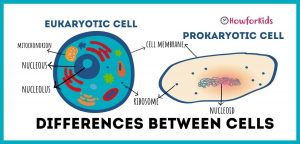
However, they may present differences in their structure and distribution of this material inside. There are two main types of cells, prokaryotic and eukaryotic.
One way to classify cells is based on the presence or absence of internal structures surrounded by their own membrane and suspended in the cytoplasm. The so-called cellular organelles can be found floating in the cytoplasm or they can be surrounded by a membrane. Accordingly, cells are classified into Prokaryotic Cells and Eukaryotic Cells.
Main Difference Between Prokaryotic and Eukaryotic Cells
The first difference that we will notice in a eukaryotic cell is that it is the size because it is larger. Eukaryotic cells are much larger than prokaryotic cells. Maybe it’s because of all the parts it contains. These cell parts are called organelles. Eukaryotic cells are the only ones that have organelles. Organelles (they are like internal organs of a cell). Like cells they have membranes to contain everything. These mini organs are located in the cytoplasm and have specific tasks. Organelles or organelles are like little factories that help plant and animal cells to function properly.
List of Cell Organelles
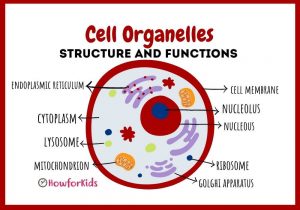
What is an Organelle?
Cell Membrane
All cells are contained by a cell membrane. It is like a big bag with a few small holes. The membrane contains all the cell parts and fluids within the cell and keeps anything unpleasant out of the cell. The holes allow entry and exit of the cell. The cell membrane is not a solid structure. It is made up of smaller molecules (proteins and phospholipids) that create a flexible, porous container. Phospholipids form the basic bag. Proteins are found around the holes and help move molecules in and out of the cell.
Ribosomes
Cells need to make proteins. Ribosomes participate in the construction of proteins. They connect one amino acid at a time and build long chains. Enzymes are made of proteins that are used to accelerate biological processes. Protein even makes up most of your hair. Ribosomes are found in many places around a eukaryotic cell. You can find them floating in the cytosol or in the endoplasmic reticulum. The endoplasmic reticulum with attached ribosomes is called a rough ER.
Golgi Apparatus
The Golgi apparatus or Golgi complex is found in most cells. It collects simple molecules and combines them to form more complex molecules, packages them into vesicles that it stores for later use, or sends them outside the cell. It is also the organelle that forms lysosomes. The Golgi complex works closely with the Rough ER.
Mitochondria
They are small organelles floating free throughout the cell. Your cells need energy for their activities. Energy is produced in oval organelles called mitochondria. They take the nutrients that enter the cells and convert them into energy. Some cells have several thousand mitochondria while others have none. Are known as the powerhouses of the cell.
Lysosomes
Lysosomes are basically a specialized vesicle that contains a variety of enzymes. They are small packages of enzymes that you will find in almost all animal-looking eukaryotic cells. Lysosomes contain enzymes that were created by the cell. The purpose of the lysosome is to digest things. They float in the cytoplasm until they are needed.
Cytoplasm – cytosol

Is the fluid that fills cells. Scientists used to call the fluid protoplasm.
Nucleus
The cell nucleus acts like the brain of the cell. The nucleus is not always in the center of the cell. It will be a big dark spot somewhere in the middle of all of the cytoplasm (cytosol). Not all cells have a nucleus. Biology breaks cell types into eukaryotic (those with a defined nucleus) and prokaryotic (those with no defined nucleus).
You may have heard of chromatin and DNA. You don’t need a nucleus to have DNA. If you don’t have a defined nucleus, your DNA is probably floating around the cell in a region called the nucleoid. A defined nucleus that holds the genetic code is an advanced feature in a cell.
Vacuoles
They are found in both animal and plant cells, but are much larger in plant cells. They are storage bubbles that can store food or any variety of nutrients needed to survive. The structure of vacuoles is quite simple. There is a membrane that surrounds a mass of liquid. In that fluid there are nutrients or waste products. They can even store waste products to protect the rest of the cell from contamination. Eventually, those waste products would be sent out of the cell. Plants can also use vacuoles to store water.
Endoplasmic Reticulum
The endoplasmic reticulum (ER) is a network of membranes found throughout the cell and connected to the nucleus. Membranes are slightly different from cell to cell, and the function of a cell determines the size and structure of the ER. Participates in the synthesis or “manufacture” of lipids and proteins. The ER is rough. Works with ribosomes in protein synthesis. It is called “rough” because the ribosomes that adhere to its surface, give it a rough and uneven appearance. Prokaryotic cells or red blood cells do not have ER. Cells of the pancreas or liver are good examples of cells with large ER structures.
Prokaryotic Cells
Prokaryotic cells do not contain a nucleus, therefore the hereditary material is freely distributed in the cytoplasm. They have a “cell wall” that surrounds the cytoplasm. An example of prokaryotic cells is bacteria.
Eukaryotic Cells
In these eukaryotic cells, the hereditary material is found within a structure called the nucleus and the organelles in the cytoplasm. There are two types of eukaryotic cells: animal cells and plant cells.
Differences between Animal cell and Plant cell
Plant cells differ from animal cells basically at these points:
- They have more regular shapes and are generally polygonal.
- They are larger than animal cells.
- Unlike the membrane of the animal cell, they are surrounded by a very thick wall.
- They have inside organelles called chloroplasts, which contain a
A coloring substance called chlorophyll, which gives plant leaves and green stems their green color.
How is the structure of the plant cell? Plant cells have a rigid wall and a large vacuole. They have organelles called chloroplasts, to carry out photosynthesis.
Plants make their own food during the photosynthesis process. That is why plants are autotrophic organisms. Photosynthesis is the process by which plants transform the energy in sunlight into nutrients. Trees and plants use photosynthesis to feed, grow, and develop. To carry out this process, vegetables need chlorophyll, which is a green substance found in the chloroplasts of the leaves.
Cellular organelles are structures contained in the cell cytoplasm (mainly eukaryotic). Not all eukaryotic cells contain all organelles at the same time, but they appear in certain cells according to their functions.
Levels of Organization in Living Organisms: Cell Organization
All living organisms are made up of cells, but some are more complex than others. In living beings a series of functions such as nutrition, reproduction, relationship with the environment, regulation or control, others must be carried out.
Three Main Functions of the Cells
- Energy generation. Nutrition functions: They allow us to obtain matter and energy. Nutrition includes processes of incorporation, assimilation of food, incorporation of oxygen, elimination of waste.

2. Transport. The functions of relationship and coordination: They allow us to link with the environment while keeping internal conditions stable.
3. Reproduction: That allows all living beings to conserve the species and not become extinct.
In unicellular organisms, these functions are performed in the only cell they have. They have a simple degree of organization.
How is Our Body Organized?
In multicellular organisms, cells have greater “organization” and functions are distributed. Some cells specialize for certain tasks.
In the human body, cells that perform similar tasks are grouped together to form tissues. For example, bone tissue allows movement, gives support to the body.
The tissues, in turn, constitute the body’s organs (stomach, lungs). And the organs that work related to each other, form an organ system (for example: veins, arteries and heart form the circulatory system). The intestine, the stomach and the mouth make up the digestive system. All systems of organs work in a coordinated way.
Cell Theory: Main Concept
The main concept of cell theory is that cells are the basic structural unit for all organisms.
The classical cell theory was proposed by Theodor Schwann in 1839. There are three parts or postulates to this theory.
What is the cell theory and what does it state?
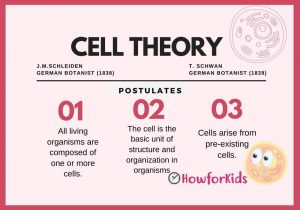
Postulates of the Cell Theory
1. All living organisms are composed of one or more cells.
The first part of the cell theory gives the idea that all living things are made of cells. This means that for something to be alive, it must be one cell or made up of many cells. All animals and plants, including trees, are made of cells. An amoeba is made up of a single cell, and it is enough to keep it alive. A rock, however, is not made up of cells, therefore it is not alive.
2. The cell is the basic unit of structure and organization in organisms
The second part of the cell theory states that cells are the basic units of life. They are the fundamental units of the structure of a living organism. They are also the basic units of function. This means that cells carry out all the processes necessary for an organism to survive. A cell is the smallest part of a living being that can still be considered alive. Single-celled organisms are alive, every plant cell is alive, and every animal cell is alive. A whole cell as a unit is alive, but any separate part of a cell is not alive by itself.
3. Cells arise from pre-existing cells.
All cells come from pre-existing cells, by their division. It is the unit of origin of all living beings. Each cell contains all the hereditary information necessary for the functioning of an organism of its species, as well as for the transmission of that information to the next cell generation. So the cell is the genetic unit.
Read also: Respiratory System [Parts and Functions]
